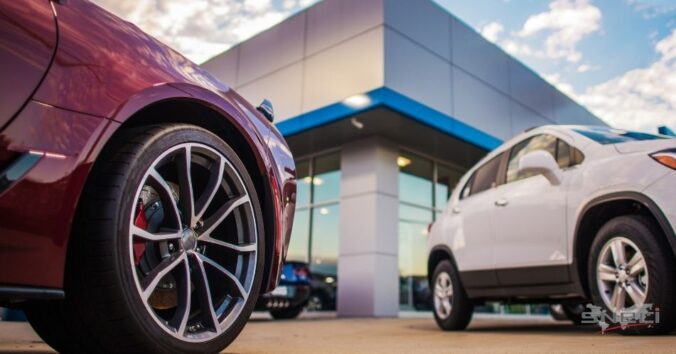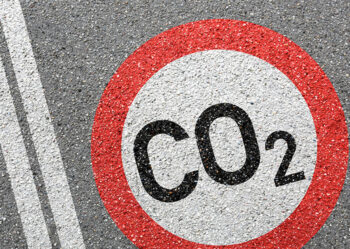The structural challenges of the automotive sector.

The automotive industry is large enough to have an impact on global growth: the sector accounts for 6% of global production (8% of exports) and 5.8% of the total workforce in the European Union (nearly 5% in the United States) – (source https://cae-eco.fr of July 20, 2020).
In France, it employs 210,000 full-time employees (INSEE) in 2017 and makes about 16% of manufacturing industry revenues.
At a time when a certain number of factors are converging to put the automotive industry under increasing strain, professionals in the sector will have to face three major structural challenges to overcome the current crisis that is affecting the entire sector.
Three major structural challenges for the automotive industry :
The semiconductor crisis, trade tensions, relocation, rising raw material costs, transportation costs that are increasingly difficult to pass on… many factors are having a considerable impact on the activity of the automotive industry worldwide, not to mention the difficulties associated with the launch of new, greener, more innovative and more efficient models.
In addition to these factors impacting the sector, the automotive industry seems to have to face three major structural challenges, both for the French and European markets.
The competitiveness and positioning of French brands :
The latest parliamentary report indicates that the French automotive industry is facing increasing difficulties in terms of positioning, not only in terms of its geographical presence but also in terms of its vehicle ranges.
One of the challenges in terms of competitiveness is the insufficient presence of French brands in emerging markets. Europe alone accounts for two-thirds of sales and three-quarters of exports of French brands, whereas 60% of the exports of the German brands go to Asia, due in particular to VAG group’s very proactive policy in China and Germany’s predominance in the premium vehicle market.
Another factor relating to competitiveness is the fact that the traditional market is shrinking in the face of the growth of premium vehicles and economy vehicles. We are also seeing manufacturers competing with players who were previously focused on other segments. For example, some manufacturers of high-end vehicles are diversifying their offerings to include mid-range models which, through their performance and price, compete directly with French production, attracting the more affluent fraction of the traditional customers of generalist brands.
At the same time, Korean carmakers, who until now have specialized in basic vehicles, are also expanding their offerings with well-equipped sedans that are increasingly popular with consumers.
The diversification and multiplication of offers, but also the changes in consumer demand, are a challenge for the leading manufacturers in the traditional market segment, both technically and commercially.
The age of the factories is also an additional difficulty, not to mention the fact that unit labor costs in French factories remain much higher than in the factories of other brands.
In summary, the decline in France’s competitiveness is due to the competitiveness of production sites, on the one hand, and the loss of attractiveness of French brands to the benefit of foreign brands, on the other hand.
In addition to this structural challenge linked to the competitiveness of the segments, another challenge awaits French carmakers: the European market and the industrial base.
Can we talk about a European car market ?
In reality, there is not really a single automotive market in Europe. Mass production, competitive R&D, massive investments, mean that although ideally a homogeneous market would make it possible to make production runs profitable and to strengthen the competitiveness of production, the reality is quite different.
The first obstacle is the non-existent European tax harmonization, which does not allow for price homogenization and implies national prices that can be doubled for the same vehicle, taking into account taxes.
This forces manufacturers to have specific prices before tax in different EU member states and to pursue commercial strategies based on discounting practices that weaken the market and gross operating margins.
Not to mention the incentives granted by the States, which are intended to encourage the purchase of certain categories of cars, but which in reality have had the effect of fragmenting the European market even further.
Technical and environmental regulations have also contributed to the difficulties of the European automotive market, with, for example, no less than six pollutant emission standards adopted in twenty years.
The “Fit for 55” climate plan should lead to better harmonization of environmental regulations in terms of greenhouse gas emissions, recycling and electric vehicles. ….
However, other regulations still pose a problem, such as air conditioning standards. European regulations differ from global standards, which adds to the challenges related to the international competitiveness of manufacturers. Thus, European manufacturers market vehicles that are intended to be marketed worldwide but that meet these EU standards. Manufacturers must therefore offer two types of cars, one for the European market, others for foreign markets.
For all these reasons, the car industry seems to be at a disadvantage compared to North American and Japanese companies, which benefit from a more homogeneous and coherent market.
Not to mention the conflicts between the European authorities and manufacturers linked to the ever-increasing number of standards and the increasingly frequent regulatory changes requiring manufacturers to adapt again and again, which have ended up making the fact that our industry is at the forefront of environmental protection and that the European fleet was on average the least polluting and safest in the world less visible.
An industry in need of integration :
The complexity of the market has highlighted the particular difficulties faced by all suppliers in the automotive industry.
The increase in raw material prices, which represent 50% of suppliers’ production costs, but also the demands of car manufacturers to decrease prices of 3 to 5% per year, and an increasing transfer of assembly and design functions of a large number of vehicle components relocated outside of France and even Europe, impact strongly the automotive suppliers.
The concentration of the market has also resulted in the number of Tier 1 suppliers referenced by French manufacturers dropping from 1,500 to 500 in less than 10 years (source https://www.senat.fr/).
Moreover, the suppliers are totally dependent and suffer from the competition between the manufacturers insofar as, realizing more than 75 % of the added value of the vehicles, they constitute the main adjustment variable in the race to reduce costs.
Tier 2, 3 and 4 suppliers are often small and medium-sized companies that do not always have the same possibilities for innovation and adaptation as Tier 1 suppliers, and for whom the main issue is survival.
In addition, Chinese and Indian suppliers are now able to offer a competitive range of products in terms of volume, quality and product range for around 40% of the parts for a vehicle produced in Western Europe.
The McKinsey Institute even estimates that, given the evolution of products in Central and Eastern Europe, only a quarter of the parts for a vehicle produced in France will have to be purchased from a local supplier in ten years’ time, which inevitably implies a continued productive adjustment of our equipment.
The Economic Affairs Committee believes that the challenge facing manufacturers concerns the entire industry, including automakers, insofar as there can be no strong manufacturers if their suppliers are in difficulty.
The same is true for the downstream players in automobile production, such as the parts manufacturers, who are also facing tough competition. The groups are taking up important market places, putting independent MRAs in difficulty.
The field of distribution and services is increasingly competitive, hence the growth of marketing, assistance and repair networks. However, this competitiveness has its limits because the evolutions are both demographic and technological since it is estimated that there is a shortage of manpower of 25 000 people among the MRAs, thus reducing the network within the territories and guaranteeing the quality of service to the users.
In addition to the difficulty in recruiting due to the under-perceived difficulty of the profession, the increasing technological innovations require considerable efforts from the MRAs in terms of material investments but also in the acquisition of new skills that cannot always be supported financially.
This difficulty in ensuring the sustainability of companies is aggravated by the need to accompany the growing technological complexity of vehicles, which requires an effort of investment and acquisition of new skills which is not currently being carried out.
In order to support automotive professionals, we have been offering for nearly 70 years two areas of expertise thanks to our 450 employees and our 10 subsidiaries allowing us to cover 45 countries worldwide.
An expertise in industrial performance and an expertise in commercial development, thanks to our quality networks built up over the years. A network of local, agile, reactive and technical experts.
We are able to support you in a production transfer, a search for suppliers or investors but also on more technical aspects such as auditing, quality, transport and logistics … do not wait any longer and contact us to help you meet your structural challenges towards the green mobility of tomorrow and increase your profitability.






